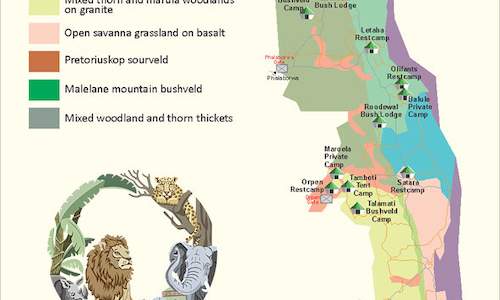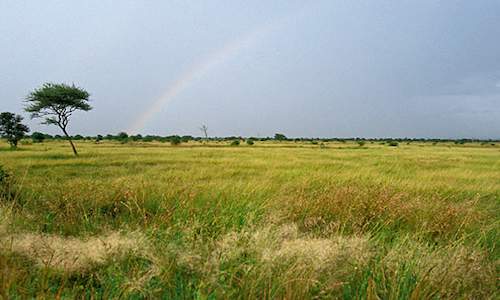
Sixteen distinct landscapes detailed below, provide a multitude of habitats for the Kruger Park's inhabitants.Located in the Southern Hemisphere, the Kruger Park has its share of rain and hot weather. During the summer months (September-April), the Park experiences sporadic rainfall in the form of quick thunder showers. April through August represent the winter months in Southern Africa which in turn means very little rain.
Weather
As far as rainfall is concerned, the southern region receives the largest amount of rainfall while the central plains receive the least. The temperatures average from 30 C (86 F) in January (summer) to 23 C (73 F) in July (winter). Please be aware that the maximum temperature can reach 47 C (117 F) (January) and 35 C (95 F) (July).Wetlands
In 1996 it was estimated that more than half of South Africa's wetlands had disappeared. Wetlands are one of the planet's most productive ecosystems. Wetlands occur where the movement of water is slowed down or obstructed by some geographical feature.The average nightly temperature can range from 7-18 C (45-64 F) (January) and most certainly freezing in July. It is highly advisable to wear 'breathable' clothes to avoid heat exhaustion or stroke during the day, drink plenty of water and ensure that appropriate clothing is available in the often cold nights.Vegetation Zones
The varying climatic conditions impact on the type of vegetation in the ecosystem that can survive and flourish in each vegetation zone. This of course affects the distribution and population densities of the various animals - each type favouring some or other ecosystem environment.Zone 1
The area in the North of the Olifants River to the Limpopo River is a the hottest and most arid of regions in the Kruger National Park. The Ecosystem's vegetation is dominated by the medium-sized Mopane Tree. The Mopane tree is untroubled by the poor, alkaline soil and erratic rainfall of the region. Nature has sensibly adapted the Mopane for such conditions: when the heat becomes unbearable, the leaves fold along the mid-rib.This allows rays of the sun to pass directly to the ground and moisture in the tree is thus preserved. The tree casts a poor shadow but absorbs a minimum of heat. Its leaves are aromatic, tasting and smelling of turpentine, but they are nutritious and enjoyed by Antelope and Elephant.


 This ecology map of Kruger Park describes the location of the various camps in relation to the climate and vegetation. The vegetation determ...
This ecology map of Kruger Park describes the location of the various camps in relation to the climate and vegetation. The vegetation determ... The various regions of Kruger Park differ according to the geology of soil types and rainfall, which dictates what sort of vegetational cove...
The various regions of Kruger Park differ according to the geology of soil types and rainfall, which dictates what sort of vegetational cove...